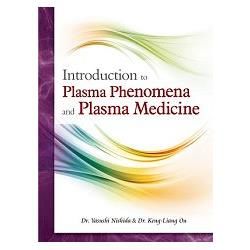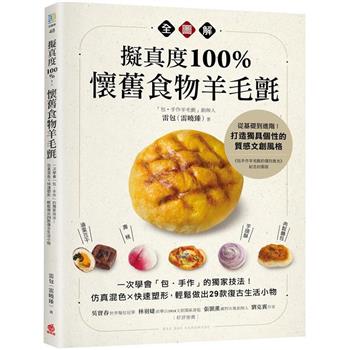This book is intended to present the application of plasma phenomena to wide variety of fields. Therefore, even if the readers do not know the plasma phenomena at present, you could understand what the plasma is and what kind of typical characteristics it has. This book is useful for the people who are studying or working in the fields of chemical engineering, electronic engineering, energy and environmental engineering or medical surgery and treatment fields, as well as in the plasma major. However, the readers are required to have leaned fundamental electromagnetism for full understanding the contents of this book. After understanding or knowing the plasma characteristics, you could improve or develop new application fields based on the plasma.
In Chapter 1, and through Chap. 4, what is the plasma is introduced by explaining terrestrial, space and astrophysical phenomena as well as artificially produced ones. These phenomena are easy to see or be made in daily life. In other words, plasmas are quite popular phenomena. The key techniques for keeping plasma in clean vessel are discussed by explaining the vacuum system. The standard diagnostic methods for obtaining plasma characteristics are also explained.
From Chapter 5, and through Chap. 7, main parts of this book are described, including the application of plasma phenomena to the material processing, energy and environmental fields, medical fields, and the combined area of these fields. The controlled thermonuclear fusion is strongly anticipated phenomena for the future energy source. The nuclear fusion, however, has vast variety of engineering tasks and fields, but this book cannot cover entire subject with respect to nuclear fusion physics and engineering. Another advanced energy source is the high energy particle beam source. With help of plasma, this system is expected to become quite small, typically 1/1000, compared with the present high energy particle accelerators. Wide variety of applications to the environmental fields such as exhaust gases treatments are also introduced.
On the other hand, fresh plants require a lot of carbon dioxide, CO2, as well as sun light. As a new technique for recycling of CO2, this gas is introduced into the greenhouse for cultivation of plants. Sterilization with use of plasma is one of other key techniques, by producing ozone in the oxygen. However, ozone is very toxic and it is not good in surrounding of human, and other nontoxic method is introduced.
The applications of plasma to the medical fields have wide variety of fields, such as surgery, surface coating of the materials used within human body and many others. In the plasma surgery, for example, damages on the surround cells of the body are quite limited compared with use of metal surgery knives. The plasma medicine is an innovative and effective for therapeutic and surgery applications in the future.
| FindBook |
有 3 項符合
Introduction to Plasma Phenomena and Plasma Medicine的圖書 |
 |
Introduction to Plasma Phenomena and Plasma Medicine 作者:Yasushi Nishida,Keng-Liang Ou 出版社:五南圖書出版股份有限公司 出版日期:2016-02-02 語言:繁體書 |
| 圖書選購 |
| 型式 | 價格 | 供應商 | 所屬目錄 | $ 1710 |
技能檢定考 |
$ 1710 |
技能檢定考 |
$ 1800 |
醫學總論 |
|---|
| 圖書館借閱 |
| 國家圖書館 | 全國圖書書目資訊網 | 國立公共資訊圖書館 | 電子書服務平台 | MetaCat 跨館整合查詢 |
| 臺北市立圖書館 | 新北市立圖書館 | 基隆市公共圖書館 | 桃園市立圖書館 | 新竹縣公共圖書館 |
| 苗栗縣立圖書館 | 臺中市立圖書館 | 彰化縣公共圖書館 | 南投縣文化局 | 雲林縣公共圖書館 |
| 嘉義縣圖書館 | 臺南市立圖書館 | 高雄市立圖書館 | 屏東縣公共圖書館 | 宜蘭縣公共圖書館 |
| 花蓮縣文化局 | 臺東縣文化處 |
|
|
圖書介紹 - 資料來源:博客來 評分:
圖書名稱:Introduction to Plasma Phenomena and Plasma Medicine
內容簡介
作者介紹
作者簡介
Yasushi Nishida
Professor Yasushi Nishida received the B.S., M.S., and Ph.D. degrees in Electronic Engineering from Tohoku University, Sendai, Japan. He was with Utsunomiya University, Utsunomiya, Japan since 1973. He was the Dean of the Faculty of Engineering and Graduate School of Engineering, and also a Trustee and Vice-President from 2004 to the end of March 2007. He has also worked in the capacity of Director of Cooperative Research Center of Utsunomiya University and Director of the Institute of Electrical Engineers of Japan, Tochigi branch. He is currently a professor with National Cheng Kung University, Taiwan. He is a Professor Emeritus with Utsunomiya University and an Honorary Professor with University of Electronic Science and Technology of China, Sichuan, China and also with Zhejiang University of Technology, Zhejiang, China. He has been a pioneer in the world of the experimental researches on the plasma-based accelerator phenomena by employing high-power microwaves or ultra-short high-power lasers. He is currently involved in the application of pulsed discharge source for production of hydrogen fed directly to fuel cell on the vehicle. He is also involved in disinfecting the contaminated air with use of plasma. He was awarded The Commendation for Science and Technology by the Minister of Education, Culture, Sports, Science and Technology, Japan. Prizes for Science and Technology in Research Category on “Discovery of Particle Acceleration by Plasma and Investigations on the Ultra-Small Accelerators” on April 11, 2011 and many others. Prof. Nishida was elected as a Fellow of the American Physical Society in 1992.
Keng-Liang Ou
Professor Keng-Liang Ou obtained his Ph.D. degree from Graduate Institute of Mechanical Engineering, National Chiao Tung University, Taiwan. He joined Taipei Medical University to pursue the cutting-edge research of biomaterials. He is also the Director of Research Center for Biomedical Implants and Microsurgery Devices and the Director of Research Center for Biomedical Devices and Prototyping Production. Besides institutional appointment, Prof. Ou serves as the President of Institute of Plasma Engineering in Taiwan, the Director of the Taiwan Society for Metal Heat Treatment, the President of Taiwan Oral Biomedical Engineering Association and the Director of Yongee Anti-cancer Foundation. Professor Ou devotes himself to the novel research in the fields of biomaterials, bioengineering, biosensing, bioimaging, and translational medicine. In addition, he establishes extensive collaborations with industry and has played a leading role in developing medical devices for health professionals worldwide. He is the leader and organizer for the biomedical product design, production, manufacturing, testing, legalization and market planning, with supports from teams of scientists and researchers with expertise in different fields. With the outstanding accomplishments in research and invention, Professor Ou received the Award of the Ten Outstanding Young Persons of Taiwan in the year of 2011 and the TMU Distinguished University Professor Award in 2014. Today he is CEO of 3D Global Biotech Inc., which is a spin-off company from Taipei Medical University.
Yasushi Nishida
Professor Yasushi Nishida received the B.S., M.S., and Ph.D. degrees in Electronic Engineering from Tohoku University, Sendai, Japan. He was with Utsunomiya University, Utsunomiya, Japan since 1973. He was the Dean of the Faculty of Engineering and Graduate School of Engineering, and also a Trustee and Vice-President from 2004 to the end of March 2007. He has also worked in the capacity of Director of Cooperative Research Center of Utsunomiya University and Director of the Institute of Electrical Engineers of Japan, Tochigi branch. He is currently a professor with National Cheng Kung University, Taiwan. He is a Professor Emeritus with Utsunomiya University and an Honorary Professor with University of Electronic Science and Technology of China, Sichuan, China and also with Zhejiang University of Technology, Zhejiang, China. He has been a pioneer in the world of the experimental researches on the plasma-based accelerator phenomena by employing high-power microwaves or ultra-short high-power lasers. He is currently involved in the application of pulsed discharge source for production of hydrogen fed directly to fuel cell on the vehicle. He is also involved in disinfecting the contaminated air with use of plasma. He was awarded The Commendation for Science and Technology by the Minister of Education, Culture, Sports, Science and Technology, Japan. Prizes for Science and Technology in Research Category on “Discovery of Particle Acceleration by Plasma and Investigations on the Ultra-Small Accelerators” on April 11, 2011 and many others. Prof. Nishida was elected as a Fellow of the American Physical Society in 1992.
Keng-Liang Ou
Professor Keng-Liang Ou obtained his Ph.D. degree from Graduate Institute of Mechanical Engineering, National Chiao Tung University, Taiwan. He joined Taipei Medical University to pursue the cutting-edge research of biomaterials. He is also the Director of Research Center for Biomedical Implants and Microsurgery Devices and the Director of Research Center for Biomedical Devices and Prototyping Production. Besides institutional appointment, Prof. Ou serves as the President of Institute of Plasma Engineering in Taiwan, the Director of the Taiwan Society for Metal Heat Treatment, the President of Taiwan Oral Biomedical Engineering Association and the Director of Yongee Anti-cancer Foundation. Professor Ou devotes himself to the novel research in the fields of biomaterials, bioengineering, biosensing, bioimaging, and translational medicine. In addition, he establishes extensive collaborations with industry and has played a leading role in developing medical devices for health professionals worldwide. He is the leader and organizer for the biomedical product design, production, manufacturing, testing, legalization and market planning, with supports from teams of scientists and researchers with expertise in different fields. With the outstanding accomplishments in research and invention, Professor Ou received the Award of the Ten Outstanding Young Persons of Taiwan in the year of 2011 and the TMU Distinguished University Professor Award in 2014. Today he is CEO of 3D Global Biotech Inc., which is a spin-off company from Taipei Medical University.
目錄
Preface
Chapter 1 What is Plasma?
1.1 Introduction
1-1-1 Fluid model
1-1-2 Kinetic model
1-2 Artificially-Produced Plasma
1-2-1 Plasma displays
1-2-2 Fluorescent lamps and neon signs
1-2-3 Industrial application
1-2-4 Fusion energy researches
1-3 Terrestrial Plasma
1-3-1 Lightning
1-3-2 Sprites
1-3-3 St. Elmo’s fire
1-3-4 The polar aurora, northern lights
1-4 Space and Astrophysical Plasma
1-4-1 The Sun and other stars
1-4-2 The solar wind
1-5 Definition of Plasma and Fundamental Characteristics
1-5-1 Plasma properties and parameters
1-5-2 Comparison of plasma and gas phases
1-6 Complex Plasma Phenomena
1-6-1 Filamentation
1-6-2 Shocks or double layers
1-6-3 Cellular structure
1-6-4 Electric fields and circuits
1-6-5 Critical ionization velocity
1-6-6 Ultracold plasma
1-6-7 Non-neutral plasma
1-6-8 Dusty plasma and grain plasma
Chapter 2 Methods for Plasma Production
2-1 Basic Mechanism of Plasma Production
2-1-1 Townsend discharge and discharge start voltage
2-1-2 Self- sustaining discharge voltage
2-1-3 Structure of glow discharge
2-1-4 High frequency discharge
2-2 Plasma Production in Low Gas Pressure
2-3 Plasma Production in High Gas Pressure
2-3-1 Corona discharge
2-3-2 Electric spark
2-3-3 Dielectric barrier discharge
2-4 Plasma Production by Lasers
2-4-1 Introduction to physics of lasers
2-4-2 Types of lasers
2-4-3 Plasma production by lasers
2-4-4 Laser classifications
Chapter 3 Key Techniques for Plasma Production
3-1 Vacuum Technology
3-1-1 Definition of vacuum
3-1-2 Necessity of ultra-high vacuum (UHV)
3-1-3 The mechanism of the vacuum pump operation
3-2 Vacuum Theory Using Ideal Gas Properties
3-2-1 Collision parameters
3-2-2 Three regions of gas flow
3-2-3 Molecular transport and pumping laws
3-2-4 Pumping law in the high and
ultra-high vacuum regions
3-3 Practical Vacuum Techniques
3-3-1 Transfer or rotary pump
3-3-2 Diffusion pumps
3-3-3 Turbomolecular pumps
3-3-4 Sorption pump
3-3-5 Simplified vacuum system design
3-3-6 Summary of vacuum pumps and their characteristics
3-4 Vacuum Measuring Technique
3-4-1 Manometer
3-4-2 Membrane gauge
3-4-3 Electronic gauge
Chapter 4 Plasma Diagnostics
4-1 Langmuir Probe Method
4-1-1 Single probe [1,2]
4-1-2 Emissive probe
4-1-3 Double probe [4,5]
4-1-4 Triple probe [6]
4-1-5 High frequency resonance probe
4-1-6 Ion sensitive probe
4-2 Microwave Interferometry and Reflectmetry
4-2-1 Plasma density measurements by microwave interferometry
4-2-2 Plasma density measurement by microwave reflectometry
4-2-3 Laser interferometry
4-3 Spectroscopy
4-3-1 Refraction of light
4-3-2 Spectroscopy
4-3-3 Instruments
4-3-4 Measurement process
4-3-5 Measured physical quantity
4-4 Laser Spectroscopy
4-4-1 Thomson scattering [18]
4-4-2 Stark effect [19]
4-4-3 Zeeman interaction [19]
Chapter 5 Plasmas for Material Processing
5-1 Low Temperature Plasmas
5-1-1 Plasma CVD and its characteristic feature
5-1-2 Plasma source for plasma CVD
5-1-3 Some examples of application of plasma CVD
5-2 Thermal Plasma
5-2-1 DC arc plasma
5-2-2 RF torch plasma
5-2-3 Microwave torch plasma
Chapter 6 Applications to Energy and Environmental Fields
6-1 Inroduction
6-2 Light Source and Display Systems
6-2-1 Light sources
6-2-2 Plasma display [3,4]
6-3 Controlled Thermonuclear Fusion for
Future Energy Sources
6-3-1 Principle of thermonuclear fusion
6-3-2 Fusion devices and experimental
results216
6-3-3 Fusion sites and international
collaboration
6-4 Particle Beam Source
6-4-1 Ion beam source
6-4-2 Neutral beam source
6-5 High Energy Particle Accelerator
6-5-1 High energy particle accelerator
6-5-2 Principle of charged particle acceleration
6-5-3 Vp×B acceleration (Surfatron)
6-5-4 Plasma beat wave accelerator
6-5-5 Plasma wakefield acceleration
6-5-6 Laser wakefield acceleration
6-5-7 Acceleration distance and optical guiding
6-6 Application to Environmental Engineering
6-6-1 Ozone production and application
6-6-2 Volatile organic compounds treatment by electrostatic precipitator
6-6-3 Exhaust gas treatment by electrostatic precipitation
6-6-4 Recycled usage of exhaust gases
6-6-5 Sterilization by plasma
Chapter 7 Biomedical Application of Plasma Technology
7-1 Introduction339
7-2 Application of Plasma on Artificial Devices
7-2-1 Effect of plasma treatment on biocompatibility and osseointegration of Ti implant
7-2-2 Wettability of implant surface improved by plasma treatment
7-2-3 Enhancement of wear and corrosion resistance by plasma treatment
7-2-4 Anti-bacterial properties of plasma nitrided layers on biomedical devices
7-2-5 The interaction between blood and material interfaces
7-2-6 Influence of surface morphology on implant
7-2-7 Pretreatment of biomaterial surface
7-2-8 Application of plasma on biomaterials
7-2-9 Application of plasma on Ti-based biomaterials
7-3 Application of Argon Plasma on Tissue of Organism
7-3-1 Basic principle of argon plasma coagulation (APC)
7-3-2 Thermal injury caused by high power argon plasma
7-3-3 Efficacy of APC therapy
7-3-4 Dependence of pulsed mode APC
Appendix
Index
Exercises
Chapter 1 What is Plasma?
1.1 Introduction
1-1-1 Fluid model
1-1-2 Kinetic model
1-2 Artificially-Produced Plasma
1-2-1 Plasma displays
1-2-2 Fluorescent lamps and neon signs
1-2-3 Industrial application
1-2-4 Fusion energy researches
1-3 Terrestrial Plasma
1-3-1 Lightning
1-3-2 Sprites
1-3-3 St. Elmo’s fire
1-3-4 The polar aurora, northern lights
1-4 Space and Astrophysical Plasma
1-4-1 The Sun and other stars
1-4-2 The solar wind
1-5 Definition of Plasma and Fundamental Characteristics
1-5-1 Plasma properties and parameters
1-5-2 Comparison of plasma and gas phases
1-6 Complex Plasma Phenomena
1-6-1 Filamentation
1-6-2 Shocks or double layers
1-6-3 Cellular structure
1-6-4 Electric fields and circuits
1-6-5 Critical ionization velocity
1-6-6 Ultracold plasma
1-6-7 Non-neutral plasma
1-6-8 Dusty plasma and grain plasma
Chapter 2 Methods for Plasma Production
2-1 Basic Mechanism of Plasma Production
2-1-1 Townsend discharge and discharge start voltage
2-1-2 Self- sustaining discharge voltage
2-1-3 Structure of glow discharge
2-1-4 High frequency discharge
2-2 Plasma Production in Low Gas Pressure
2-3 Plasma Production in High Gas Pressure
2-3-1 Corona discharge
2-3-2 Electric spark
2-3-3 Dielectric barrier discharge
2-4 Plasma Production by Lasers
2-4-1 Introduction to physics of lasers
2-4-2 Types of lasers
2-4-3 Plasma production by lasers
2-4-4 Laser classifications
Chapter 3 Key Techniques for Plasma Production
3-1 Vacuum Technology
3-1-1 Definition of vacuum
3-1-2 Necessity of ultra-high vacuum (UHV)
3-1-3 The mechanism of the vacuum pump operation
3-2 Vacuum Theory Using Ideal Gas Properties
3-2-1 Collision parameters
3-2-2 Three regions of gas flow
3-2-3 Molecular transport and pumping laws
3-2-4 Pumping law in the high and
ultra-high vacuum regions
3-3 Practical Vacuum Techniques
3-3-1 Transfer or rotary pump
3-3-2 Diffusion pumps
3-3-3 Turbomolecular pumps
3-3-4 Sorption pump
3-3-5 Simplified vacuum system design
3-3-6 Summary of vacuum pumps and their characteristics
3-4 Vacuum Measuring Technique
3-4-1 Manometer
3-4-2 Membrane gauge
3-4-3 Electronic gauge
Chapter 4 Plasma Diagnostics
4-1 Langmuir Probe Method
4-1-1 Single probe [1,2]
4-1-2 Emissive probe
4-1-3 Double probe [4,5]
4-1-4 Triple probe [6]
4-1-5 High frequency resonance probe
4-1-6 Ion sensitive probe
4-2 Microwave Interferometry and Reflectmetry
4-2-1 Plasma density measurements by microwave interferometry
4-2-2 Plasma density measurement by microwave reflectometry
4-2-3 Laser interferometry
4-3 Spectroscopy
4-3-1 Refraction of light
4-3-2 Spectroscopy
4-3-3 Instruments
4-3-4 Measurement process
4-3-5 Measured physical quantity
4-4 Laser Spectroscopy
4-4-1 Thomson scattering [18]
4-4-2 Stark effect [19]
4-4-3 Zeeman interaction [19]
Chapter 5 Plasmas for Material Processing
5-1 Low Temperature Plasmas
5-1-1 Plasma CVD and its characteristic feature
5-1-2 Plasma source for plasma CVD
5-1-3 Some examples of application of plasma CVD
5-2 Thermal Plasma
5-2-1 DC arc plasma
5-2-2 RF torch plasma
5-2-3 Microwave torch plasma
Chapter 6 Applications to Energy and Environmental Fields
6-1 Inroduction
6-2 Light Source and Display Systems
6-2-1 Light sources
6-2-2 Plasma display [3,4]
6-3 Controlled Thermonuclear Fusion for
Future Energy Sources
6-3-1 Principle of thermonuclear fusion
6-3-2 Fusion devices and experimental
results216
6-3-3 Fusion sites and international
collaboration
6-4 Particle Beam Source
6-4-1 Ion beam source
6-4-2 Neutral beam source
6-5 High Energy Particle Accelerator
6-5-1 High energy particle accelerator
6-5-2 Principle of charged particle acceleration
6-5-3 Vp×B acceleration (Surfatron)
6-5-4 Plasma beat wave accelerator
6-5-5 Plasma wakefield acceleration
6-5-6 Laser wakefield acceleration
6-5-7 Acceleration distance and optical guiding
6-6 Application to Environmental Engineering
6-6-1 Ozone production and application
6-6-2 Volatile organic compounds treatment by electrostatic precipitator
6-6-3 Exhaust gas treatment by electrostatic precipitation
6-6-4 Recycled usage of exhaust gases
6-6-5 Sterilization by plasma
Chapter 7 Biomedical Application of Plasma Technology
7-1 Introduction339
7-2 Application of Plasma on Artificial Devices
7-2-1 Effect of plasma treatment on biocompatibility and osseointegration of Ti implant
7-2-2 Wettability of implant surface improved by plasma treatment
7-2-3 Enhancement of wear and corrosion resistance by plasma treatment
7-2-4 Anti-bacterial properties of plasma nitrided layers on biomedical devices
7-2-5 The interaction between blood and material interfaces
7-2-6 Influence of surface morphology on implant
7-2-7 Pretreatment of biomaterial surface
7-2-8 Application of plasma on biomaterials
7-2-9 Application of plasma on Ti-based biomaterials
7-3 Application of Argon Plasma on Tissue of Organism
7-3-1 Basic principle of argon plasma coagulation (APC)
7-3-2 Thermal injury caused by high power argon plasma
7-3-3 Efficacy of APC therapy
7-3-4 Dependence of pulsed mode APC
Appendix
Index
Exercises
|









